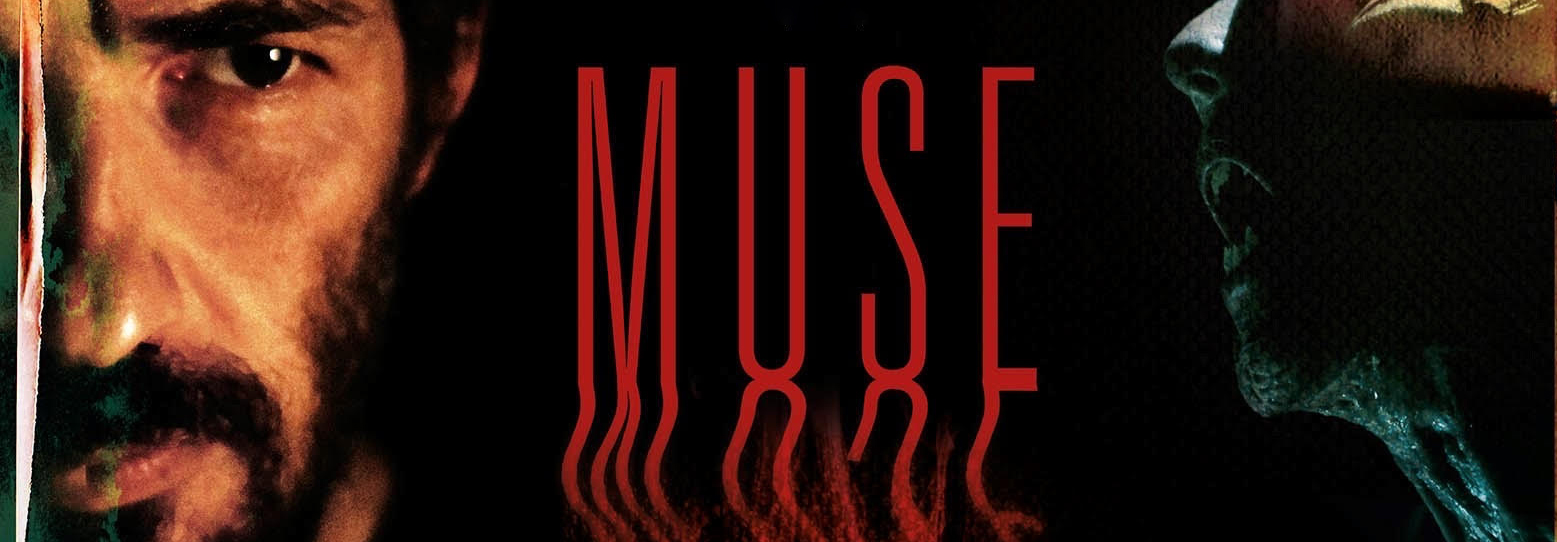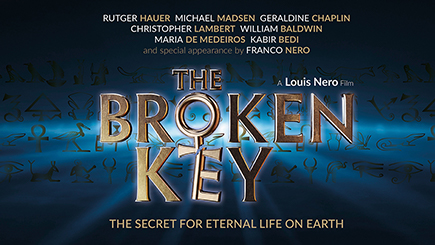I had the privilege to preview a new, decadently Gothic-style film from writer/director Candida Brady. Since her past films were either documentaries or, based on real life circumstances, it was a real treat to be able to see her highly creative and artistic side. This particular piece shines a light on, yet another, important subject, which, if you’ve seen her past work, Brady is known for, but this is her best yet.
THE PAIN OF THE UNINSPIRED ARTIST
Luca, (Geza Rohrig) is a prominent, renowned painter who’s about to embark on a huge art retrospective featuring a compilation of his work over the years. Currently a recluse, due to severe agoraphobia and depression, people on his team have been calling him to not only cement details of his show but also get him some publicity. Between the phone calls and his daily food delivery service, he has all he can handle and most days, it takes all his courage just to open the door. Even his artistic inspiration is but a passing memory.
Though he lives, seemingly alone, in his decrepit surroundings, always lurking in the shadows is his insidious, unrelenting roommate: The Demon (Rupert Everett). The Demon is depression and insecurity embodied, that whispers things to him like, “Happiness is overrated.” and “There is no escape”. The Demon is an omnipresent figure concealed in the shadows of the antiquated building Luca haunts. The building is a character in and of itself, enclosing Luca in the greys and blues that consume his mind, and an imposing metaphor for the prison Luca is locked in, in his own head.
When unrequited love Grace (Alison Doody) re-enters his life, it casts a sliver of light into his ever-dark days and transports him back to a time when he had more confidence, joy and the promise of a life outside of his literal and proverbial cages. Grace is a journalist who wants to meet up and interview Luca about his retrospective, and though he longs to see her again, could he overcome his demon long enough to venture out?
PAINTING A FILM
The brilliance of this film lies not in what is said, but all that is left unsaid. The hypnotic imagery plays upon the senses almost as if it were a moving painting. From the hum and crackle of the lights to a puff of steam from an iron, it is a veritable visual and auditory feast. Brady and Director of Photography Steve Robson deliver the lushness and delicate intricacies of the meticulous, cinematic sensuality that I adore in many Adrian Lyne films, that is all but left out in modern film.
The lighting and decor are absolute perfection, with a Gothic-like whimsy, reminiscent of old fairy tales and a Poe-like atmosphere of dread and madness. Soaked in literal blues, greys and enduring shadows, right down to the blueberry smoothies Luca drinks, the film faithfully captures the all-consuming bleakness of depression. With only one location in the entire film, the viewer is absorbed into Luca’s haunted world until the very end and thanks to its superb, prolific imagery we are more than happy to stay in it.
The music, though mostly recognizable classical compositions, plays with the overall mood throughout creating heaviness, lightness or an overall sense of unease. Brady ingeniously uses each musical morsel to her and the story’s advantage, illustrating not only what we see happening, but also hints at that which is less obvious, lurking beneath the immediate surface. It becomes yet another metaphor for those living with mental illness, who may seem fine on the outside, but who’s suffering is imperceptible to the rest of the world.
Source: Blenheim Films
————————————————————————————————————————-
THE MONSTERS IN OUR HEADS
According to the World Health Organization, as of March 2018 over 300 million people globally have depression. It is the leading cause of disability worldwide and a major contributor to the overall global burden of disease.
The rate of suicide in young people aged 15-24 in America has nearly tripled from 1960, making it the third leading cause of death in adolescents and the second leading cause of death in college age youth. It is estimated by the National Alliance on Mental Illness, that 1 in 5 adults in the US has some form of mental illness, but less than half get actual treatment for it.
These statistics are only those who have actually reported some sort of disturbance. Many “live with it” on a daily basis with no help due to rampant, world-wide stigma associated with mental illness. Help is seen by many as something only “crazy” people get and many more believe they can get over whatever they have alone or through means like religion. Yet many others “get over it” (or don’t), abusing illicit drugs, prescribed opioids or alcohol, which only contributes to the problem and can exacerbate the issues.
Muse is yet another example of the important role that film can play in creating awareness about widespread human issues that aren’t normally spoken about. When we are able to “see ourselves” in the context of something safe, like an artistic work, it opens the door to “taboo” subjects, even though mental health is as human and important as our physical health.
Source: Blenheim Films
——————————————————————————————————————————–
IN ALL HONESTY…
Muse is a true work of art.
Candida Brady brings to the forefront another relevant issue of great significance in our world, that is layer upon layer of artistic ingenuity woven into a lush, film fabric that, together, creates a metaphoric masterpiece. It is an ingenious and inventive breath of fresh air in modern film and an incredible feat to have created something so luxurious and beautiful out of a one location, basically two-character script.
Though The Demon character represents depression in this story, it could represent a plethora of other mental illnesses. Giving life to The Demon reveals to those who don’t suffer with mental illness, a more authentic glimpse into what it’s like, day to day, for those that do. There may not be an actual, physical creature keeping a hold over those who suffer, but it certainly can feel that way.
Put together a world that, by and large, still dismisses people with mental illness and a broken system set up to “help” them, and you’ve fabricated a recipe for a widespread human crisis. Which is why it is so vital for us to open the discussion on mental illness and keep talking.
Muse opens up that conversation brilliantly. Its allegorical and theatrical feel allows the audience the necessary space to be safely immersed into Luca’s world without the harsh grittiness of reality. Though the content is heart wrenching we never feel “hit over the head” with its message and its overall production quality is much too lovely to look away from.
And as I’ve said before, there is no greater voice for those who cannot be heard than a phenomenally made film, like this one.
Credit and source – https://www.qbphive.com/reviews/muse









